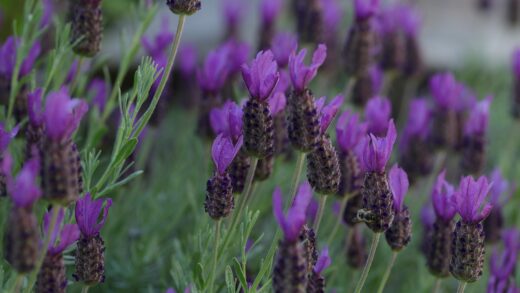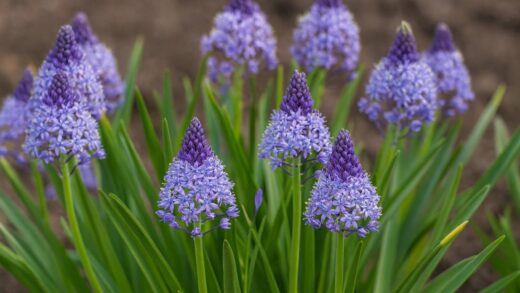Successfully establishing a Burnet Rose begins with thoughtful planting, a process that lays the groundwork for a healthy and resilient shrub for years to come. Unlike many demanding garden plants, this rose is forgiving, but adhering to a few key principles during planting will ensure it thrives rather than just survives. The ideal time for planting is during the dormant season, either in the autumn or early spring, which allows the root system to establish itself before the stresses of summer heat or winter cold. When you receive your plant, whether it’s bare-root or container-grown, the goal is to get it into the ground promptly, minimizing the time its roots are exposed to the air. Proper hole preparation, correct planting depth, and adequate initial watering are the cornerstones of this crucial first step in the life of your rose.
The first step in the planting process is preparing the planting site. As this rose variety thrives in well-drained soil, you must assess and, if necessary, amend your soil’s structure. For heavy clay soils, it is essential to improve drainage by incorporating generous amounts of horticultural grit and well-rotted organic matter. Dig a planting hole that is significantly wider and deeper than the root ball of your plant—aim for at least twice the width and one and a half times the depth. This loosened soil surrounding the new plant will make it much easier for the roots to penetrate and expand as they grow.
When you are ready to plant a container-grown rose, carefully remove it from its pot, trying to keep the root ball as intact as possible. Gently tease out any roots that are circling the bottom of the pot to encourage them to grow outwards into the new soil. For bare-root roses, which are typically shipped dormant without soil, it is beneficial to soak the roots in a bucket of water for a few hours before planting to rehydrate them. Inspect the bare roots and trim away any that are broken or damaged with clean, sharp secateurs.
Positioning the plant at the correct depth within the hole is critical. The graft union, which is the swollen point where the rose variety was grafted onto the rootstock, should be positioned right at or slightly below the soil level. You can use a cane or a straight stick laid across the top of the hole to accurately gauge the depth. Once you have the plant positioned correctly, begin backfilling the hole with the excavated and amended soil, gently firming it down around the roots to eliminate any large air pockets.
Optimal timing and location
Selecting the right time of year to plant your Burnet Rose can have a significant impact on its successful establishment. Autumn planting is often considered ideal in many climates, as the soil is still warm from the summer, which encourages root growth, but the cooling air temperatures reduce the stress on the plant’s foliage. By planting in autumn, the rose has several months to develop a robust root system before the onset of summer heat and potential drought, giving it a considerable head start.
More articles on this topic
Early spring is the second-best option for planting. This should be done as soon as the soil is workable and the threat of severe frost has passed. Spring planting allows the rose to establish its roots as the soil gradually warms up, preparing it for the active growing season ahead. However, plants established in the spring may require more diligent watering throughout their first summer compared to those planted in the autumn, as their root systems will be less developed when the hotter, drier weather arrives.
The location you choose is just as important as the timing. The Burnet Rose demands a position in full sun, meaning it needs a minimum of six hours of direct sunlight each day. This exposure is crucial for promoting vigorous growth, ensuring prolific flowering, and helping to prevent the development of fungal diseases by keeping the foliage dry. An open, airy location is preferable to a confined space, as good air circulation is another key factor in maintaining the health of the plant.
When considering the location, you must also account for the mature size and natural growth habit of the shrub. Rosa spinosissima spreads by underground suckers, gradually forming a dense thicket. Therefore, it is wise to plant it where it will have ample room to expand without interfering with other plants, paths, or structures. This suckering habit can be used to your advantage if you desire a dense, informal hedge, but it requires careful consideration of its placement to avoid creating a maintenance issue in the future.
From container to ground
Transitioning a container-grown Burnet Rose into your garden is a straightforward process, but it requires careful handling to minimize transplant shock. Before you begin, water the plant thoroughly in its pot an hour or two before you plan to plant it. This ensures the root ball is well-hydrated and helps it to slide out of the container more easily. When you are ready, gently tip the container on its side and carefully ease the plant out, supporting the base of the stems with one hand. Avoid pulling the plant out by its stems, as this can cause damage.
More articles on this topic
Once the rose is out of its pot, take a moment to inspect the root system. If the roots are tightly packed and have started to circle the bottom of the pot, a condition known as being root-bound, you will need to gently loosen them. You can do this with your fingers or by making a few shallow vertical cuts down the side of the root ball with a sharp knife. This action encourages the roots to grow outwards into the surrounding soil rather than continuing to grow in a restrictive circular pattern.
Place the prepared root ball into the center of your pre-dug planting hole. The top of the root ball should be level with the surrounding ground. Use a straight edge, like a piece of wood or a rake handle, placed across the hole to check the depth. It is crucial not to plant it too deep, as this can lead to the stem rotting, nor too shallow, which can expose the roots. Once you are satisfied with the depth, you can begin to backfill the hole.
Fill the hole with the soil you originally excavated, firming it gently around the root ball as you go to eliminate any air pockets. Do not stamp the soil down too hard, as this can cause compaction. Once the hole is completely filled, create a shallow basin or “moat” of soil around the base of the plant. This will help to direct water straight to the root zone when you irrigate. Finally, give the newly planted rose a deep and thorough watering to settle the soil and provide essential moisture.
Bare-root planting techniques
Planting bare-root roses is an economical and effective way to establish new plants, but it requires slightly different handling compared to container-grown specimens. Bare-root roses are typically sold and shipped during their dormant period in late autumn or early spring. Upon arrival, it is essential to unpack them immediately. If you cannot plant them right away, you can temporarily store them in a cool, dark place, ensuring the roots remain moist by wrapping them in damp newspaper or cloth.
Before planting, rehydration is the most critical step. Submerge the entire root system of the bare-root rose in a bucket of tepid water for at least a few hours, or even overnight. This process allows the roots to absorb much-needed moisture after being out of the ground during storage and transit. While the roots are soaking, you can prepare the planting hole, ensuring it is wide and deep enough to accommodate the root system without bending or cramping it.
Inside the planting hole, create a firm cone or mound of soil at the center. The purpose of this mound is to support the base of the plant while allowing the roots to be spread out evenly in a downward and outward direction. Carefully inspect the roots before placing the plant in the hole and use clean, sharp secateurs to prune away any that are broken, dead, or excessively long. This clean-up helps to stimulate new root growth once the plant is in the ground.
Drape the rehydrated roots over the cone of soil inside the hole, ensuring they are spread out naturally. The graft union, the knob-like point where the top growth joins the rootstock, should be positioned at the correct depth, typically just at or slightly below the final soil level. Begin backfilling the hole with soil, working it in carefully around the roots to ensure there are no air gaps. Once the hole is filled, firm the soil gently and water the plant thoroughly to settle it into its new home.
Propagation methods
The Burnet Rose is relatively easy to propagate, with the most common and successful methods being through the removal of suckers or by taking softwood cuttings. Propagation from suckers is arguably the simplest technique, as it takes advantage of the plant’s natural tendency to spread. The suckers are new shoots that arise from the plant’s own root system at a distance from the main crown. These suckers are essentially clones of the parent plant and already have their own developing root system.
To propagate from suckers, select a healthy, vigorous shoot that has grown some distance from the parent plant in the late autumn or early spring. Using a sharp spade, drive it firmly into the ground between the parent plant and the sucker to sever the connecting root. Then, carefully dig around the sucker, preserving as much of its own root system as possible, and lift it from the ground. This new, small plant can then be planted directly into its new location or potted up to grow on for a season before being planted out in the garden.
Another effective method of propagation is by taking softwood cuttings in late spring or early summer. This is the period when the new growth is at the ideal stage of maturity—it should be firm enough to not wilt immediately but still flexible enough to bend easily. Select a healthy, non-flowering shoot and, using a sharp knife or secateurs, take a cutting that is about four to six inches long. Make the cut just below a leaf node, as this is where rooting hormones are concentrated.
Once you have your cutting, remove the leaves from the lower half and dip the cut end into a rooting hormone powder to encourage faster root development. Insert the prepared cutting into a pot filled with a well-draining rooting medium, such as a mix of perlite and compost. Water the cutting well, and then cover the pot with a clear plastic bag or place it in a propagator to create a humid environment. Keep the medium consistently moist and in a bright, warm location out of direct sunlight. Roots should begin to form within a few weeks.
📷No machine-readable author provided. Svdmolen assumed (based on copyright claims)., CC BY-SA 3.0, via Wikimedia Commons
















